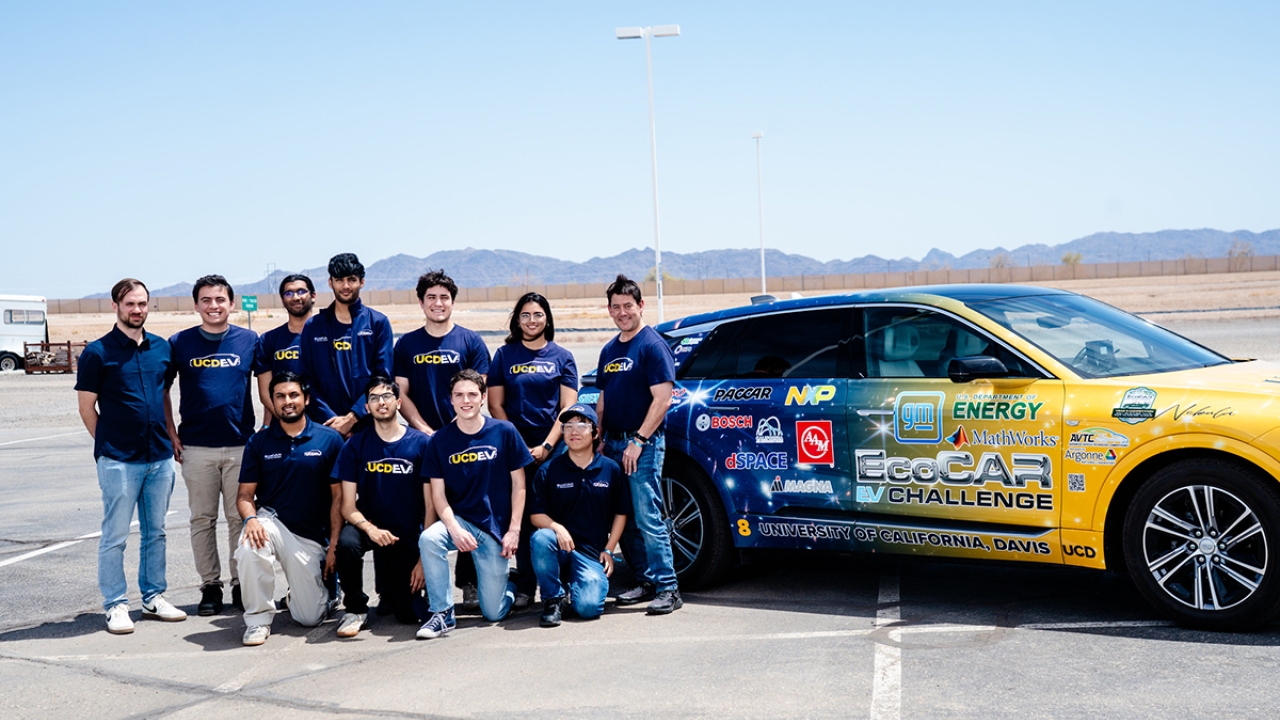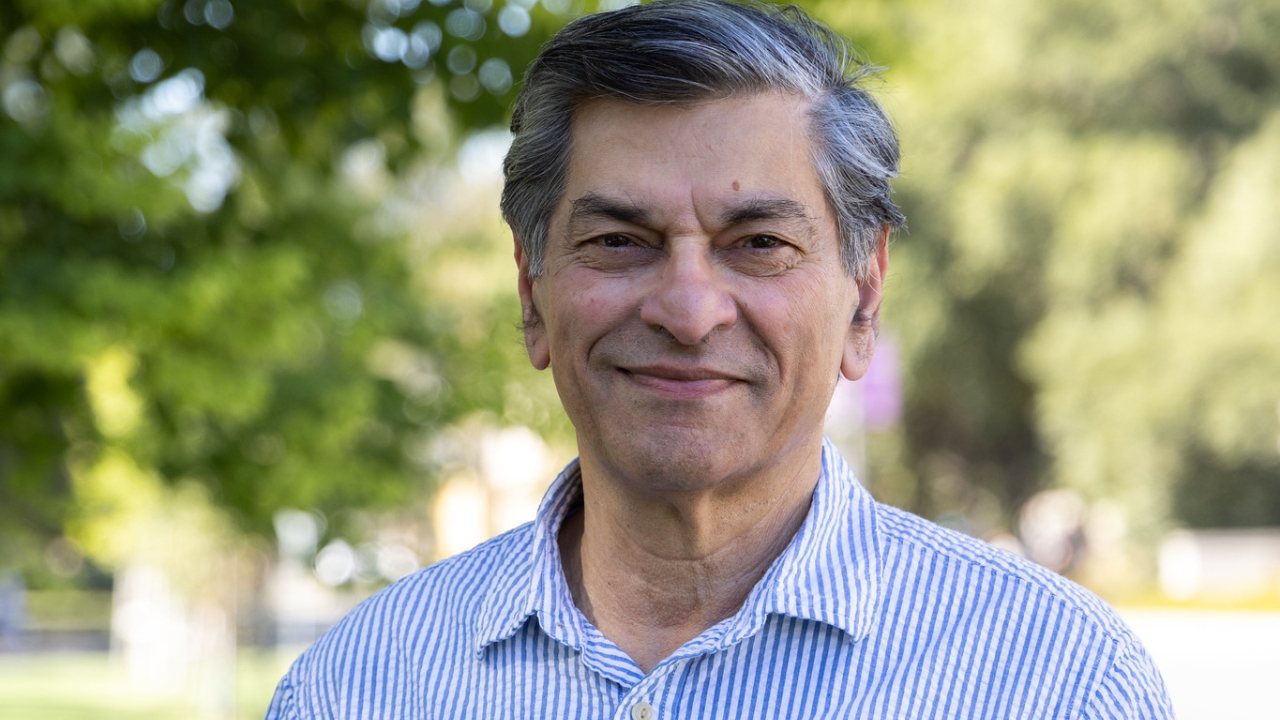Fine-tuning future environmental pathways
Climate mitigation engineer Alissa Kendall embarks on a novel approach to assessing proposed clean-energy materials
Also published in Engineering Progress, Fall 2014
by Derrick Bang
Alissa Kendall’s desire to change the world emerged at a young age. Her eventual interest in environmental engineering and life-cycle assessment (LCA) began with a childhood in Honduras.

“Moving to the U.S. after that was a culture shock,” says Kendall, now an associate professor at the Department of Civil and Environmental Engineering. “And a sense of the injustice and unfairness of what people experience in different parts of the world. It seemed that a lot of the problems derived from a lack of water and a good sanitation infrastructure.
“I decided that I would become an engineer, so I could fix those problems.”
She majored in environmental engineering at Duke University, and then she spent two years as a product development engineer at Ford Motor Company’s headquarters in Dearborn, Michigan.
“I worked on the battery system of the electric Ranger, released only as a fleet vehicle. Those early-gen batteries had to be charged constantly, and I instinctively knew that this wasn’t good for the environment; in Michigan, all that electricity was coming from coal. How could that possibly have been better than gasoline, from the standpoint of air pollution, climate change and fossil fuels? And how could that be determined?”
Such questions brought Kendall back to environmental engineering, and inspired her interest in the concept of life-cycle assessment. She returned to academia, enrolling at the University of Michigan, Ann Arbor, in its School of Natural Resources and Environment. She worked on a large National Science Foundation grant in Materials Use: Society, Engineering and Sustainability. “Our part of the project involved cement materials, and I must confess that my enthusiasm initially was limited,” she laughs. “But my advisor pointed out that cement is the second-largest emitter of CO2, after power generation … and that made it interesting.
“So, yes, my dissertation was on cement, and our resulting LCA model was the first-ever designed to include sustainability variables such as infrastructure, durability, repair rates, traffic delay due to work-zone congestion, the health effects of increased accident rates, and other indirect effects.”
After completing her PhD at Michigan in 1007, Kendall joined the faculty at UC Davis.
A few years later she obtained funding through a grant from a steel industry organization to study life-cycle vehicle greenhouse gas emissions. CAFE (Corporate Average Fuel Economy) standards address only fuel economy, but recent EPA standards have focused on CO2 emissions at the tailpipe, so the two standards must cooperate.
“But my question was, why were we examining only the tailpipe, when we potentially were moving a lot of emissions away from the ‘use phase,’ and into the production phase?
“Traditional vehicles have engines connected to drive trains. Hybrids have an engine, a reasonably large battery and a traction-drive motor: many more parts. A plug-in hybrid has even more parts. In all cases, you’re also doing a lot of other stuff, like trying to ‘lightweight’ the vehicle. As a result, we’re pushing a lot more emissions to the production stage … so, if we look solely at the tailpipe, do we get the right answer? Will we, via policy, promote the right vehicle?
“We did our research and discovered that the worst material being used was magnesium, a lightweighting material. Magnesium is a rather basic material, but, unfortunately, it’s produced quite ‘dirtily’ these days. But if we start recycling it, does it remain such a bad material?
“The same can be said for lithium and various rare earths, which are important for newer future cars; hybrids, plug-in hybrids, and electric vehicles. Automotive production is experiencing enormous changes at the moment. Demand has increased, and production capacity has gone way up; new sources must be found.”
By coincidence, Kendall was exploring these questions just as the National Academies of Science and various government agencies were releasing studies concerning critical materials, particularly those for clean energy: rare earths, lithium and even magnesium.
“I put together a proposal to dynamically model all these materials over time, so we could understand the long-term implications of introducing such vehicles to the marketplace. For example, I wanted to account for the fact that we might be able to set up a recycling infrastructure. We also have to consider all the potential sources that might come on line, over time, and how their impacts would vary. Even when abundance exists, there often are constraints on production, and a lot of variability in the environmental impacts associated with one production site over another.
“So, as we meet this ever-increasing demand for clean-energy materials — materials also used in many electronics — how do their environmental impacts change, and can we predict how they’ll change in the future? Which tech becomes environmentally preferable?”

Kendall’s innovative modeling proposal caught the attention of the National Science Foundation, which in January awarded a three-year grant of $260,922 to her project titled Dynamic Life Cycle Assessment for Critical Energy Materials: Developing a New Framework for Integrated Industrial Ecology Methods.
Her project will concentrate on four metals considered critical to clean energy technology: lithium, magnesium, neodymium and dysprosium. The research will allow clean energy technology developers to anticipate the long-term negative environmental consequences of selecting a particular material in a design, thereby facilitating life-cycle decision-making at the earliest stages of product development. At the same time, the project also will help policymakers and industry anticipate the timing required for identifying alternative materials and resources, when necessary, and for developing a robust recycling infrastructure.
“The big-picture goal is to help governments and tech developers think about, and anticipate, future opportunities and future problems … so they know, for example, that 10 years down the road, if using a given material, they’ll need to invest in a recycling infrastructure, to avoid potential problems.
“One takeaway will be the ability to answer this sort of question: What’s the likely life cycle inventory of dysprosium in the year 2030? You then can integrate that answer with a vehicle LCA model, and have a much better picture of what technology to invest in, over time, and how that will affect the long-term performance of that technology.
“What are the preferred environmental pathways to the future? My primary field of study is climate change mitigation, but we don’t want to study only greenhouse gases, because other environmental issues could be equally enormous: toxicity, radioactivity, tailings from different processes … things that aren’t necessarily obvious when we buy electronics or ‘clean’ energy.
“And that’s the important next step: How do we take all this information and do something that helps us prioritize a more holistic vision of environmental improvement?”
Kendall pauses, and smiles.
“So you see, that’s a lot bigger than what comes out of a tailpipe.”




